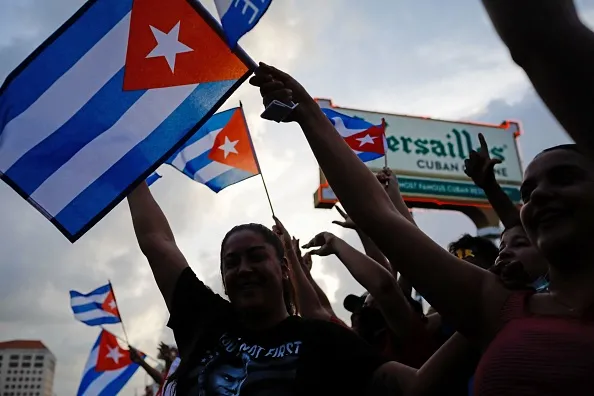
Denver Newsroom, Oct 28, 2022 / 16:00 pm (CNA).
Earlier this week a large number of women surprised the world by wearing a red dress with white polka dots at the beatification Mass of the “heroine of chastity.”
Cardinal Leonardo Steiner, archbishop of Manaus, celebrated the beatification Mass Oct. 24 for Benigna Cardoso, a 13-year-old girl called the “heroine of chastity” because she died defending her purity.
Benigna Cardoso da Silva was born Oct. 15, 1928, in Santana do Cariri, in Ceará state in Brazil. The young girl would attend Mass, read the Bible, and generously attend to those in need, especially the elderly. She was murdered at the age of 13 after resisting sexual abuse by a teenage boy.
The Eucharist was celebrated in the Pedro Felício Cavalcanti Exhibition Park, in the city of Crato, Brazil, in the presence of about 30,000 people.
Many of them wore polo shirts and carried small flags with Benigna’s face to express their joy and celebrate the first blessed born in Ceará and the fourth martyr from Brazil.
Among the crowd, a large number of smiling adult women and girls were seen wearing red dresses with white polka dots, similar to the one worn by Benigna in her official portrait for the beatification ceremony.
The official painting of the new blessed was made from facial reconstruction work and was done by artist Joab Rocha, who was commissioned by the Diocese of Crato.
View this post on Instagram
The diocese presented the official portrait and statue of Blessed Benigna Cardoso at an Aug. 24 press conference.
During the event, the vicar general of the Diocese of Crato, Father José Vicente Pinto de Alencar Silva, explained the profound meaning of the clothes and accessories in the image of Benigna.
Pinto said that the dress is the same one that the blessed wore on Oct. 24, 1941, the day she was martyred.
That day Benigna went out to fetch water from a fountain when she was attacked with a machete by 16-year-old Raimundo Raúl Alves Ribeiro after resisting being sexually abused by him.
The priest explained that the red dress with white polka dots that Beata Benigna wore “prophetically” symbolized her martyrdom
“Red recalls blood and white holiness of life,” he pointed out.
In addition, he said they decided that the statue of the young teen should wear a ring on the index finger “to represent the everlasting marriage that the virgin Benigna Cardoso entered into with her divine husband, the Lord Jesus.”
The priest explained that she was united with Christ “through the blood pact, resisting until the end so as not to stain her soul and present herself pure before the Lord.”
At the beatification Mass, Cardinal Steiner recalled that the blessed is a “defender of the dignity of women” at a time when many women are murdered and many children are abused.
“The blessed, dear brothers and sisters, virgin and martyr. Martyr, the one who gives, the one who gives life to the end, holds nothing back, she offers everything, even in the immolation,” the cardinal said.
“This young woman who gives us the witness of her faith in life and in death is extraordinary. Today we invoke her: Blessed Benigna!” he concluded.
This story was first published by ACI Prensa, CNA’s Spanish-language news partner. It has been translated and adapted by CNA.
If you value the news and views Catholic World Report provides, please consider donating to support our efforts. Your contribution will help us continue to make CWR available to all readers worldwide for free, without a subscription. Thank you for your generosity!
Click here for more information on donating to CWR. Click here to sign up for our newsletter.





Leave a Reply